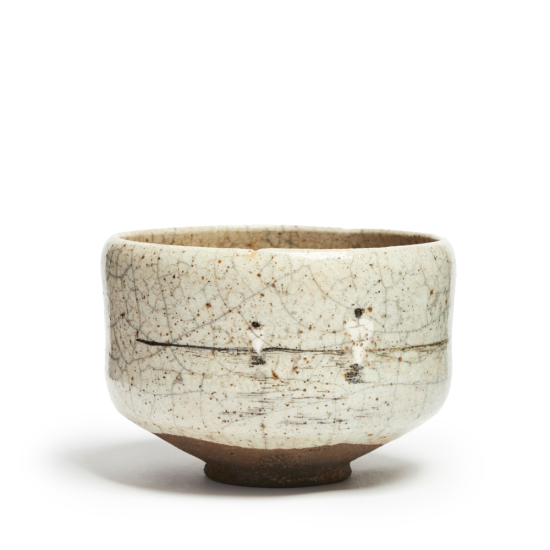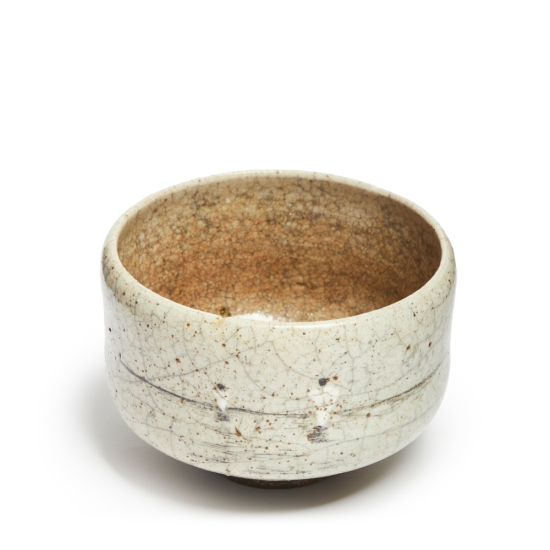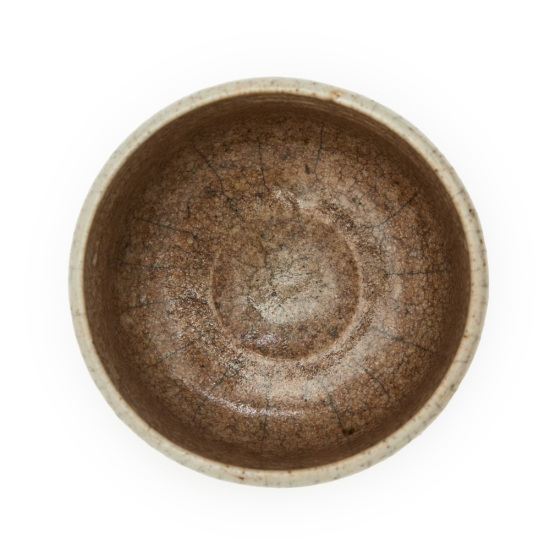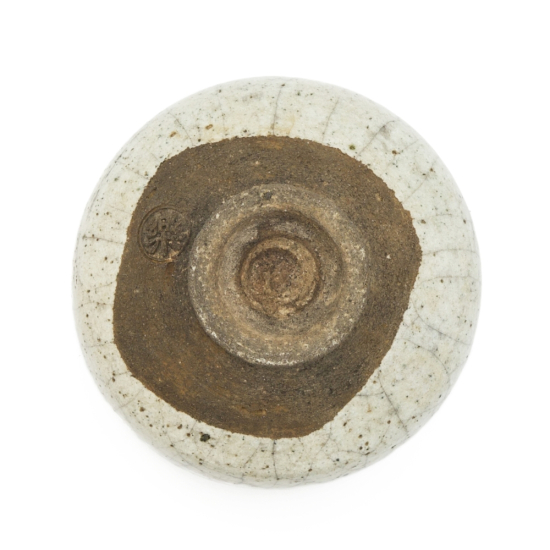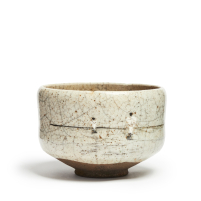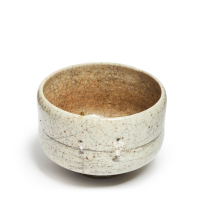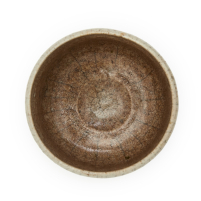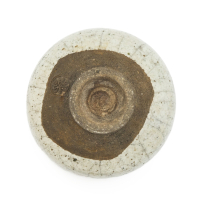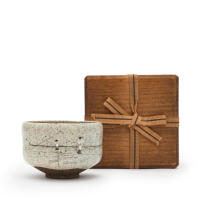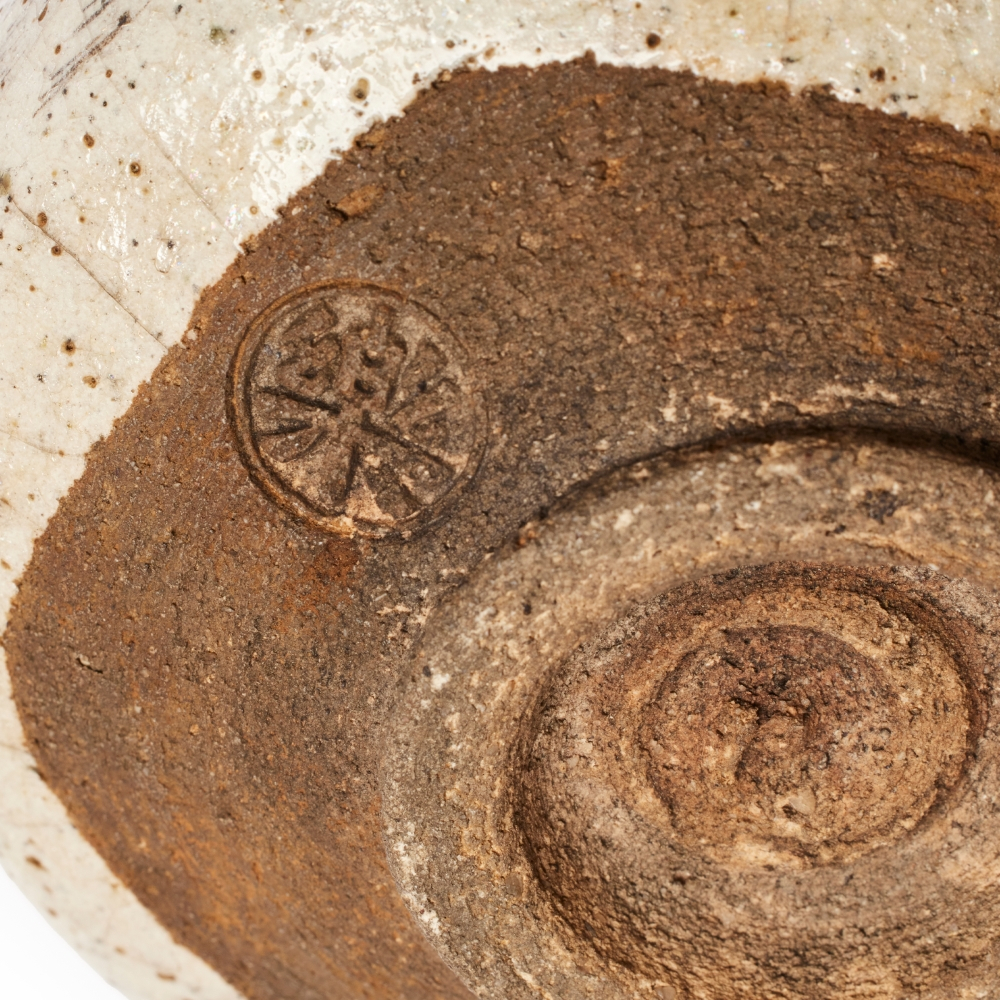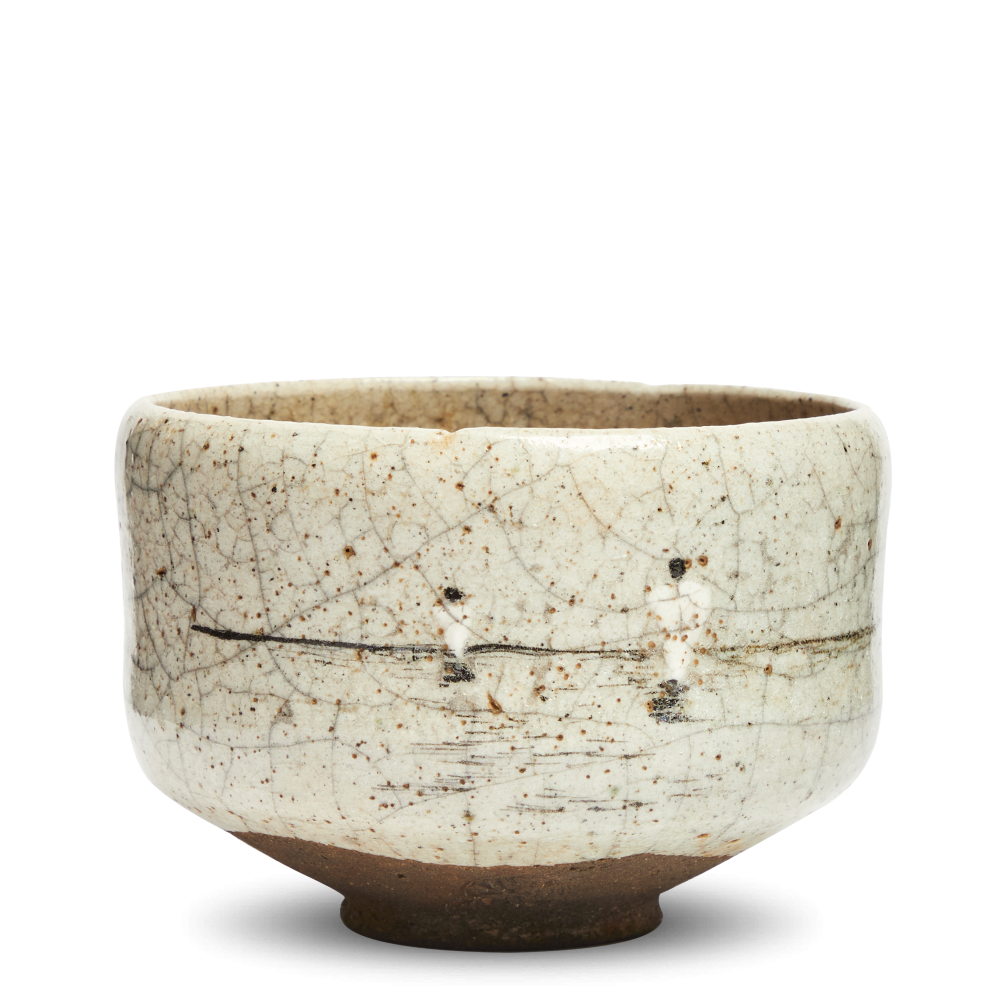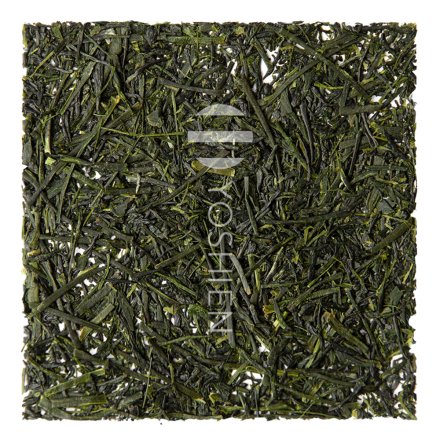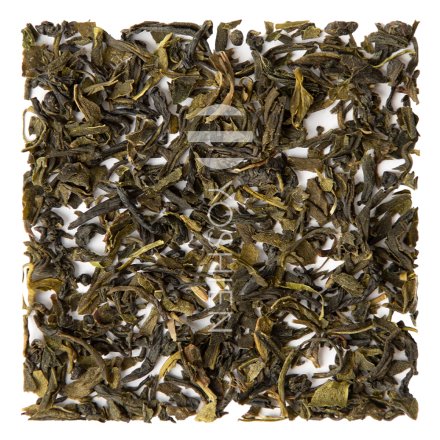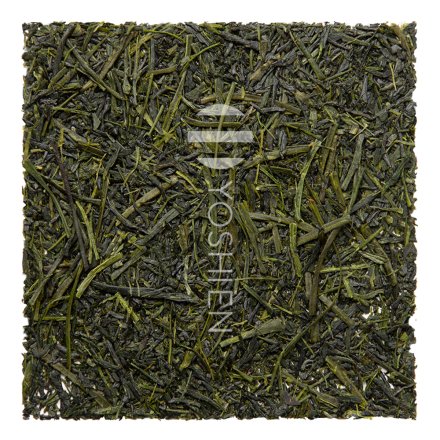Almost exclusively used for tea ceremonies, traditional Japanese Raku is a special type of hand-moulded, lead-glazed pottery that is quick-fired at low temperatures then rapidly cooled in air or water to give it its characteristic soft, warm texture. Designed to reflect the sobriety of the Wabi-cha aesthetic championed by Japanese tea master, Sen no Rikyu, Raku bowls were originally produced, without ornament, in black or red – colours believed to bring out the vibrant green of Matcha most beautifully.
Tannyu Chawan
Shi-Raku
Raku Kichizaemon X
SKU
0163
A rare Shiro Raku-yaki Chawan tea bowl by Raku Kichizaemon X, aka Tannyū (1795–1854), made in Kyoto during the first half of the 19th century. The bowl is of a slightly uneven, cylindrical form, covered in a grey-white glaze with large craquelure, and illustrated with sailing boats on a dark grey horizon line. The Raku seal is stamped adjacent to the unglazed foot-ring in a double circle.
| Artist | Raku Kichizaemon X (Tannyū) |
|---|---|
| Period | 1800–1850 |
| Item | Chawan matcha bowl |
| Origin | Kyoto, Japan |
| Style | Raku-yaki (楽焼) |
| Dimensions | Ø11.2 x 7.9cm |
| Weight | 246g |
| Artist's mark | Double circle Raku seal to base |
| Packaging | Kiribako, silk bag |
This masterpiece is part of the Yoshi en Private Collection, shown here for display only and is not for sale.
In stock



